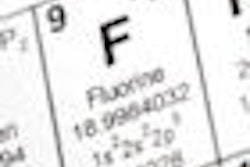A Florida State University (FSU) researcher has developed a molecular sensor that changes color when a sample containing fluoride is added to it (Journal of the American Chemical Society, November 29, 2010).
"The U.S. Environmental Protection Agency recommends that 1 part per million (ppm) of fluoride ions is acceptable in drinking water, but above 2 ppm is considered a serious health risk," said Sourav Saha, PhD, an assistant professor in FSU's department of chemistry and biochemistry and its Integrative NanoScience Institute, in a press release. "Because fluoride is carcinogenic even at such small doses, a sensor is needed to detect fluoride selectively at very low concentrations and in the presence of other naturally occurring and biologically important ions."
Saha and a team of graduate students and postdoctoral researchers discovered that a compound called naphthalene diimide (NDI) interacts with fluoride ions in a uniquely colorful way.
"NDIs are a family of neutral (albeit electron-deficient) aromatic compounds that are colorless until fluoride is added," Saha said. "A small amount of fluoride will quickly turn the sample orange, while a larger amount will turn it pink. In this manner, it becomes very easy to determine not only the presence of fluoride in water, but at what levels."
While other fluoride sensors exist, many of them cannot differentiate between fluoride and other anions (negatively charged ions) that might be present in the water.
"Although they can detect fluoride, they cannot accurately measure the levels of fluoride," Saha said. "Naked-eye detection of fluoride at different concentration levels is an advantage of NDI-based sensors. Our sensor relies on an electron transfer event from a fluoride ion to the NDI receptor for generating a visible response or signal, which in this case is color change. The electron transfer process can be reversed, and the sensor can be regenerated and reused over and over again."
By designing an appropriate sensor, Saha's laboratory has achieved a "nanomolar" sensitivity for fluoride, meaning it can detect about 0.0001 mg of fluoride in a liter of water.
Artificial fluoridation of drinking water is commonly practiced in many industrialized nations. While precise numbers are unavailable, perhaps 400 million people living outside of the U.S. are located in areas where water is artificially fluoridated, according to the British Fluoridation Society. Untold millions of others, especially in parts of Africa, India, and China, rely on water sources whose natural fluoride levels exceed Environmental Protection Agency recommendations and efforts to measure the amount of fluoride present in many of those areas are inconsistent and imprecise, according to FSU.
"This is a very significant public health issue worldwide," Saha said. "Some developing countries fluoridate their water but don't have a means for measuring it accurately. Others are drinking water that hasn't been treated with fluoride but that might already contain dangerous amounts naturally. Clearly there is a critical need for a fluoride sensor that can tell people whether their water supply is safe."
Saha filed for a U.S. patent on the fluoride-sensing process in June 2010 and hopes to know within the next year whether the patent will be granted.
Copyright © 2010 DrBicuspid.com



















